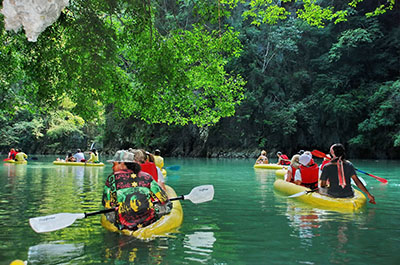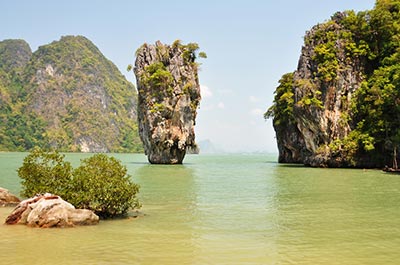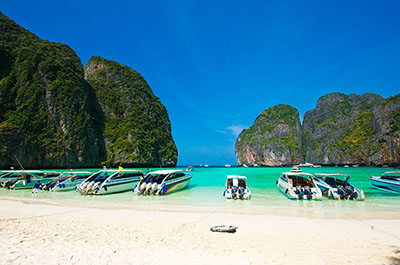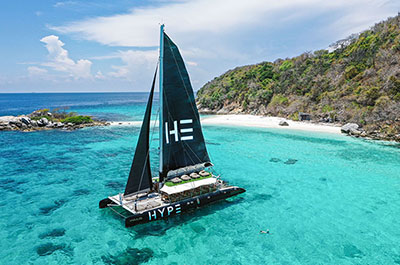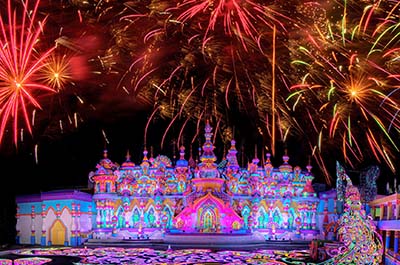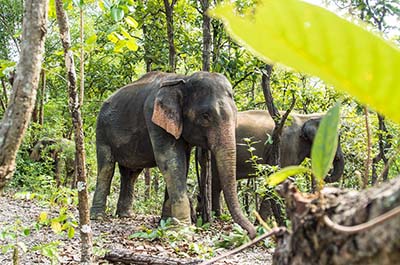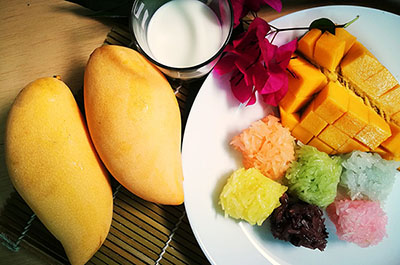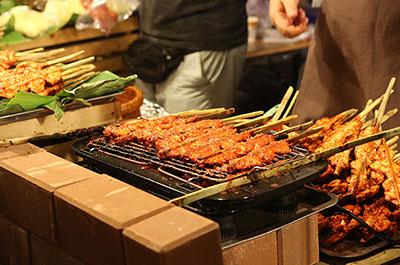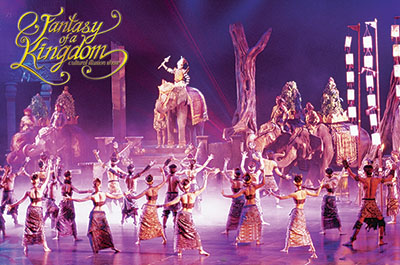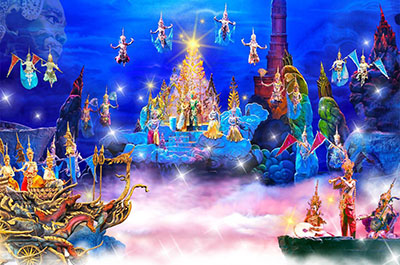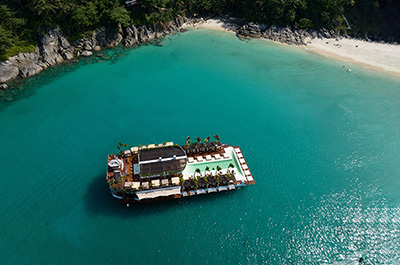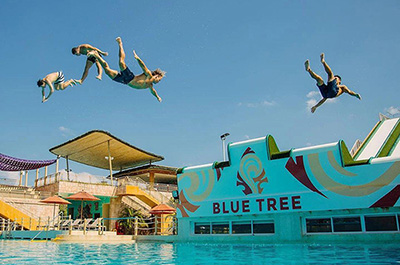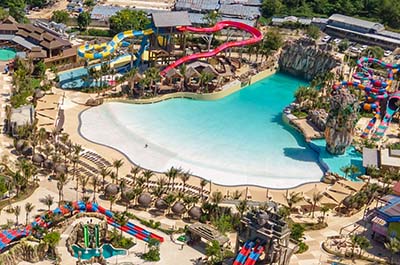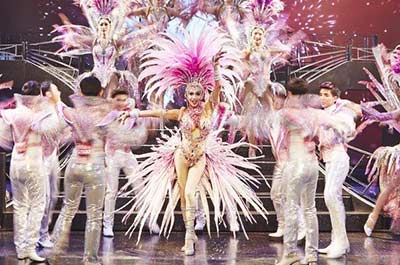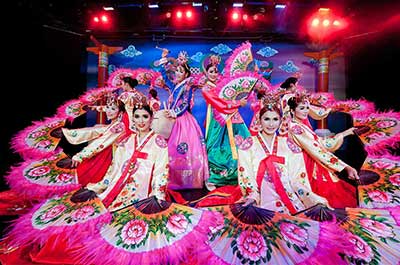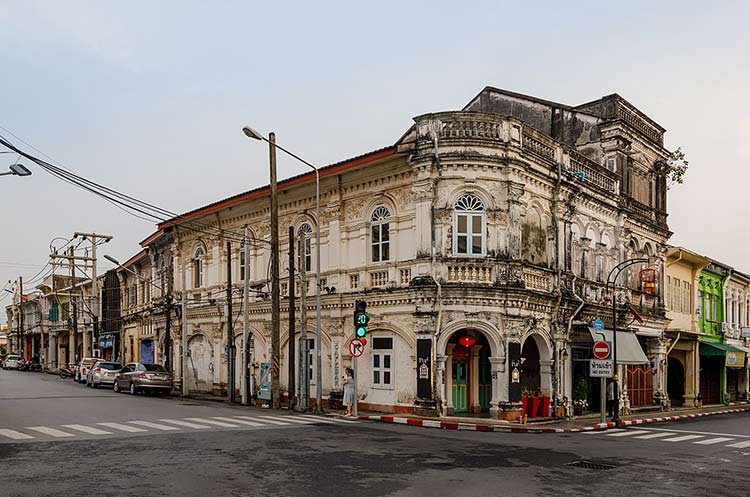
Photo by CEphoto, Uwe Aranas (CC BY-SA 4.0)
Old Phuket Town
Historic shophouses & mansions
If you want to spend a day away from the beaches, visit the old center of Phuket Town with its beautiful historic buildings.
Old Phuket Town
The historic town is centered around Ratsada Road, Phang Nga Road, Thalang Road, Dibuk Road and Krabi Road. An attractive area with beautiful Sino Portuguese buildings, traditional shophouses and narrow sois, the old town shows Thai, Chinese, Malay and Baba influence.
Don’t miss the renovated Chinese houses on Dibuk Road, colonial architecture as the beautiful Governor’s Mansion and the On On hotel on Phang Nga Road, which featured in the movie The Beach.
Many old buildings have been renovated and turned into museums, shops, restaurants or hotels.
Local cuisine
Because of its many influences, Phuket Town is one of best places in Thailand to take a food tour or a cooking class. The Phuket food scene has been influenced by Royal Thai cuisine, Malay, Hokkien Chinese, Indonesian and Peranakan cuisine.
Phuket history
Before Phuket became a popular tourist destination, the island derived much of its wealth from tin mining. The mining brought Chinese, Malays and other immigrants to Phuket.
Most of the tin trade was dominated by Chinese merchants until the early 20th century, when European companies were brought in.
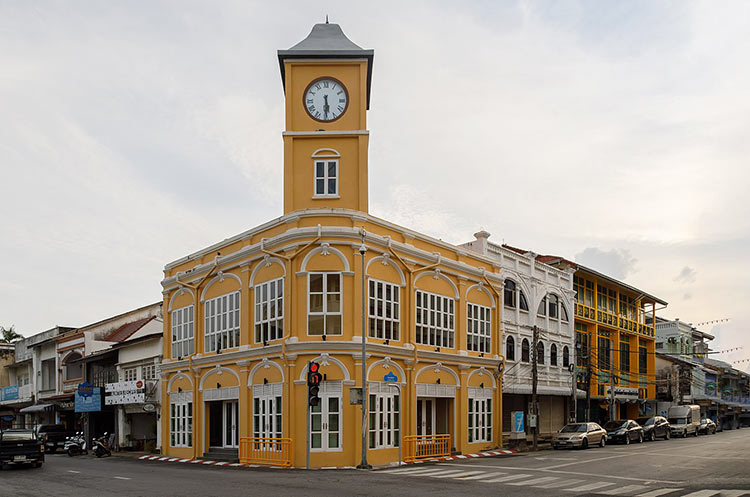
Photo by CEphoto, Uwe Aranas (CC BY-SA 4.0)
The Baba people
During the 15th and 16th centuries many Chinese workers came over to Phuket looking to make a living. Because they were not allowed to bring Chinese women with them, they married local Phuket women. They and their descendants are known as the Baba, also called Peranakan, a people with its own distinct clothing, food and culture.
Sino Portuguese architecture
Across the old town are many examples of Sino Portuguese architecture, also known as Peranakan style, a mixture of Chinese and Portuguese architecture. The style was created when Portuguese immigrants who came to Phuket employed Chinese workers to build shophouses and mansions.
A great number of Sino Portuguese shophouses was built with a commercial area on the ground floor and the living area on the upper floors. Several large Sino Colonial mansions were built for rich traders.
Governor’s Mansion
On Krabi Road is the Phra Pitak Chinpracha Mansion, one of the most beautiful buildings in old Phuket town. Better known as the Governor’s Mansion, it was built by a rich Chinese merchant in 1940. It has since been completely restored.
The large Sino Portuguese mansion in a yellowish color has a large lawn with big trees in front of it. The building was used by several Phuket governors as their official residence.
It is now being used as a restaurant and for the Blue Elephant cooking school. The restaurant opens daily from 11:30 am until 2:30 pm and from 6 pm until 10:30 pm.
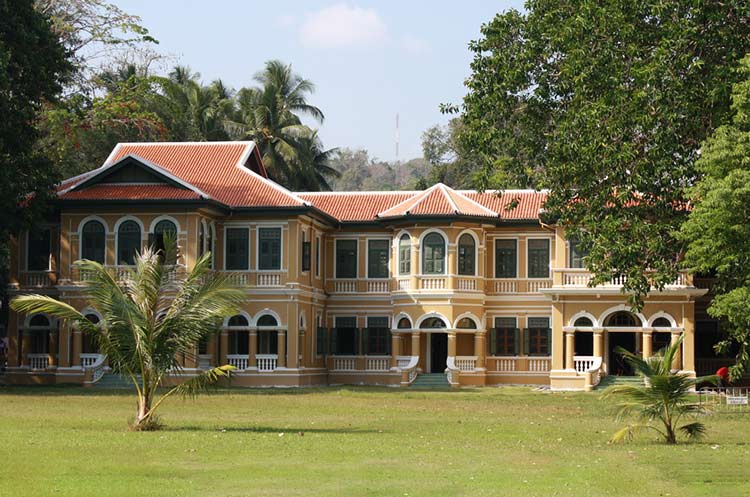
Photo by Полина Славянская (CC BY 3.0)
Phuket Baba Museum
The museum tells the history of the Baba people in Phuket. It is housed in two Sino Portuguese style buildings in old Phuket Town. The first used to be the old Standard Chartered Bank, an elegant two storey building completed in 1907 when the tin mining business was booming. The second building across the street is the former police station of the Thalang area. Its most noticeable feature is the clock tower on top.
On display are items as old furniture, artifacts, jewelry, tableware, art and traditional Baba garments. An audio visual presentation is shown five times a day that shows the life of the Baba in previous centuries, their culture, work, distinct architecture, food and the way of life in a typical Chinese shophouse.
The Phuket Baba museum is located on the intersection of Phang Nga Road and Phuket Road. It opens Monday to Saturday from 10 am until 8 am. Entrance is free.
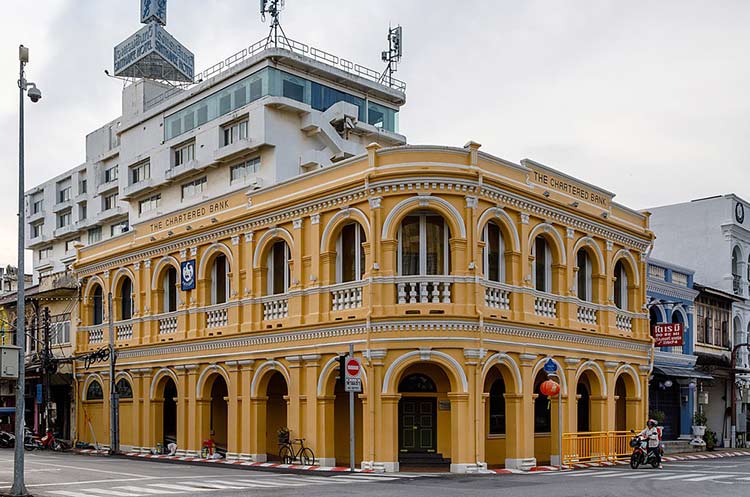
Photo by CEphoto, Uwe Aranas (CC BY-SA 4.0)
Soi Romanee
One of the most attractive streets in old Phuket Town, Soi Romanee is lined with very colorful renovated Sino Portuguese shophouses. The soi connects Dibuk Road and Thalang Road.
Sa-Nguan pharmacy
Although recently built, the Sa-Nguan pharmacy building is a good example of the Sino Portuguese classic style. The three storey building houses shops on the ground floor, the living area is on the upper floors.
The pharmacy is located at 150 Thalang Road. Opening hours are 7:30 am until 9 pm daily.
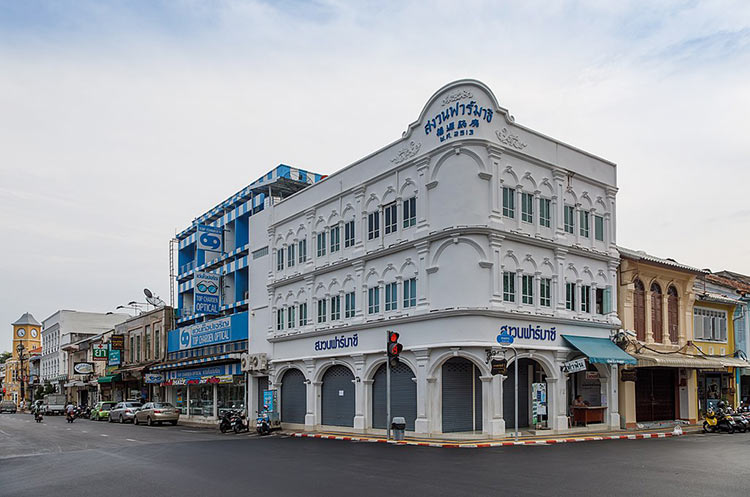
Photo by CEphoto, Uwe Aranas (CC BY-SA 4.0)
Thai Hua Museum
The Thai Hua museum tells the story of Chinese immigrants in Phuket. The museum is housed in a beautiful two storey Sino Portuguese style building completed in 1934.
It exhibits mostly old photos and Chinese and Peranakan cultural and historical items. There are several interactive displays and lots of informational texts on the museum walls.
Thai Hua Museum is located at 28 Krabi Road in old Phuket Town. It opens daily from 9 am until 5 pm. Admission is 200 Baht per person.
How to get there
If you’re staying in Patong or one of the other main beach resorts on the West coast, take a songthaew, also called the Blue Bus. Stand by the side of the main road and wave one down. Fare is 40 to 50 Baht payable in the songthaew. If you prefer a private ride, get a Grab taxi.
Other Phuket beaches and towns
More Phuket attractions:
Attractions in Phuket
John Gray’s Sea Kayak Tour
- Kayaking in Phang Nga Bay
- Explore hidden caves and cliff lined lagoons
- Visit Panak Island and Hong Island
- Kayak in emerald lagoons
- Professional English speaking guide
